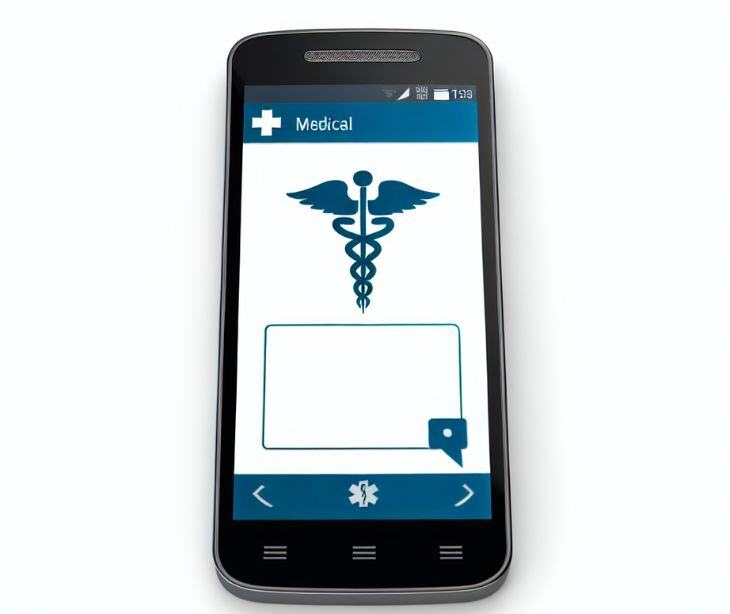3 min read
How texts from healthcare providers can lead to better health
Caitlin Anthoney March 13, 2024

Text messages are an effective way of changing health-related behaviors in patients with chronic conditions like type II diabetes. They can receive personalized yet easily accessible support that will result in better health outcomes.
Accessibility and convenience
Research shows that over 96% of US adults use cell phones on a daily basis. Text messaging is the most common mobile phone activity among all users. It also does not require internet connectivity, making it a universally accessible platform for delivering tailored interventions.
Personalization
Personalized texts involve framing information to create a perception among participants that the message is specifically crafted for them, regardless of its content. Healthcare providers can tailor text messages to meet the specific needs of individuals managing chronic conditions, like type II diabetes. According to ResearchGate, utilizing participants' names or other identifiers, like age or ethnicity, within a generic message can enhance its persuasiveness.
Using patient feedback, providers can send texts that are adapted to the patient’s behavioral states at various points during the intervention. They can further personalize these texts by aligning them with the patient's personal needs, goals, and interests.
Read also: HIPAA compliant text messaging
How effective can text message interventions be?
In a recent study, text messages about motivation, adherence, physical activity, and healthy food were sent to patients with chronic hypertension and diabetes. Patients found the text messages easy to understand and initiated positive behavioral changes. A further 84.6% reported adopting healthier eating habits as a result.
The study states that the text-based behavioral intervention led to weight loss, portion reduction, and improved diet quality. Additionally, most patients said that they “would suggest the program to others.”
World Health Organization (WHO) on text message behavioral interventions
WHO recognizes text message interventions as a valuable tool for promoting positive behavioral change. It also stresses evaluating and monitoring text message interventions to ensure their efficacy in promoting positive health behaviors.
Best practices to enhance the quality of behavioral interventions based on WHO guidelines
1. Choose the best technology platform
Paubox's secure text messaging platform ensures encrypted communication, protecting patient privacy while delivering personalized messages for behavioral change.
2. Use patient preferences
Obtain patient authorization and consider their text messaging preferences. Frequent communication maintains engagement, but excessive messages can lead to disinterest.
3. Personalize content
Use personalized messages to address specific patient needs and goals, whether it's weight management or chronic disease management.
4. Use patient feedback
Encourage patients to provide ongoing feedback on the effectiveness of the messages they receive. Use this information to adapt the treatment plan as needed.
5. Ensure accessibility
Address barriers to accessing text message interventions, such as connectivity issues or language barriers. Ensure that messages are culturally sensitive and accessible to all patients, regardless of socioeconomic status or technological proficiency.
6. Evaluate long-term costs
Improved adherence to medication schedules and lifestyle changes can slow the progression of chronic illnesses including diabetes and hypertension, which can lower the need for expensive medical treatments and the management of consequences.
7. Consider healthcare settings
Use an adaptable platform, like Paubox, to ensure smooth transitions between different care settings, including primary and specialized healthcare. This promotes efficiency and continuity of patient care.
8. Ensure patient data safety and security
Comply with HIPAA regulations and strict encryption standards. Use Paubox to ensure the privacy of protected health information (PHI) throughout its transmission and storage.
FAQs
How can providers support patient weight loss through texting?
Providers can use HIPAA compliant text messaging to send motivational tips for healthy eating and exercise. The patient feedback can then be used to set achievable goals and track progress over time, celebrating successes and providing support during setbacks.
How can diabetes be better managed through texts?
Text messages can serve as medication reminders, helping patients remember to take their insulin or oral medications on time. Providers can remind patients to check their blood glucose levels regularly and the provider can adjustments to their treatment plan if needed. Patients can also be encouraged through motivational texts on healthy eating, regular exercise, and stress management.
How can hypertension be better managed through texts?
Providers can send reminders to patients to take their blood pressure medications as prescribed, resulting in better medication adherence. Educational texts can be used to inform patients about the importance of blood pressure management. Using patient feedback, the provider can suggest lifestyle modifications to lower their blood pressure. These tips may include reducing sodium intake, increasing physical activity, and practicing relaxation techniques.
Subscribe to Paubox Weekly
Every Friday we'll bring you the most important news from Paubox. Our aim is to make you smarter, faster.




